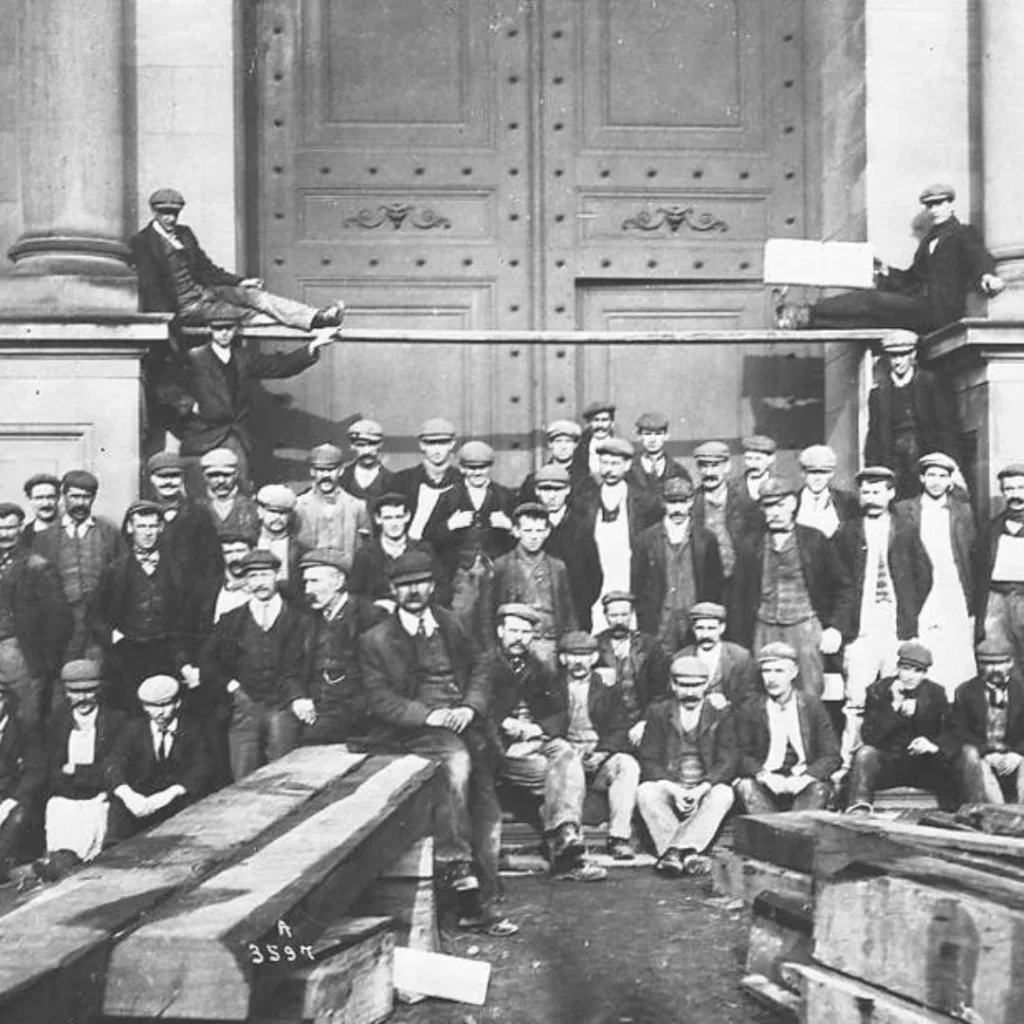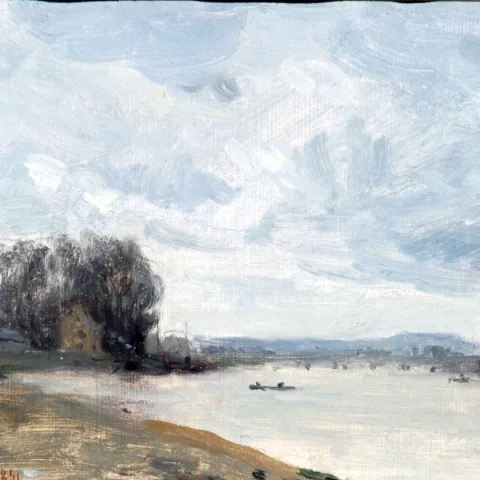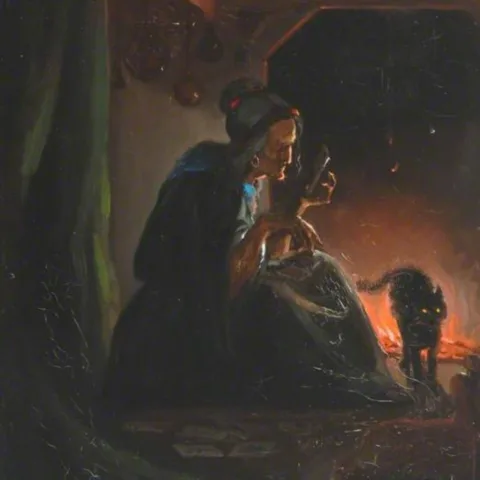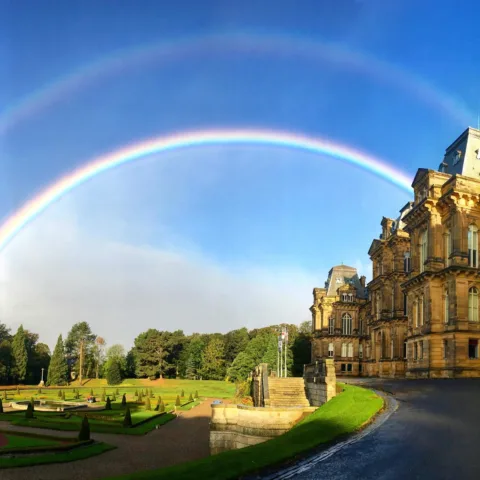The Bowes Museum Blog

The dream starts to take shape…

Exactly 150 years ago, The Bowes Museum started to take shape. The wall around the park was the first thing to be built and then, on Saturday November 27, 1869, in a quiet and private ceremony, the foundation stone was laid by Joséphine Bowes. The 20-acre site occupied about a dozen plots of land bought at various times during the previous five years.
At the end of 1864, John Bowes asked his Barnard Castle solicitor to take steps towards the purchase of some fields which at that time belonged to a Mr Mainwaring and a Mr Todd. Throughout the negotiations, Bowes’ name was kept in the background perhaps in the hope that the price would be lower than if it was known he was the purchaser. And even when it was known, the purpose of the land remained a mystery for some years. At one point, he wrote to his solicitor to say that when Mr (Ralph) Dent starts the wall of the Park, ‘do not let forget to let old Mr W have the benefit of the report that the place is intended for a Lunatic Asylum’. [John Bowes and The Bowes Museum, Charles Hardy]
John and Joséphine spent their summers at Streatlam except for a four year break from 1865 to 1868. And in 1869 they arrived safely at London on August 18. They travelled by train to Broomielaw station and the Castle omnibus was there to greet them. Hardy writes: “At Streatlam, two ponies sent by Cotterell, the London horse dealer, were there. They were for the basket carriage and would be useful for driving over to Barnard Castle to see Josephine’s fields. It was not long before she was visiting the Museum land with Bowes and viewing it for the first time as landowner. The wall surrounding the park was making good progress, but the exact site of the Museum selected by Watson, the architect, was awaiting the approval of Mr and Mrs Bowes.”

(It was speculated by Edward Western in the first published Museum history in 1890, that for a short while Calais in France was considered for its eventual location, but it was soon dismissed because of the country’s turbulent political climate.) The International Exhibition in Paris in 1867 saw the rate of buying step up a gear. They purchased around 200 items many of which were because they illustrated the daily life and arts and crafts of countries within Europe and beyond. At the London Exhibition of 1871, Joséphine again bought a lot but this time, mainly pottery and porcelain.

In 1868, the Boweses had discovered another art dealer, Rogiers of Ghent and he became an important supplier of pictures, tapestries and other works of art. In 1869 he wrote at least 12 letters to the Bowes offering them a wide selection of items. The following year, one consignment he dispatched to Paris contained no fewer than 43 pictures. They bought tapestries from him literally by the metre, regardless of quality or subject matter.
In the year of the foundation stone laying, significant purchases 1869 are thought to have included El Greco’s Tears of St Peter (a painting which John Bowes had previously refused to buy until persuaded by his art dealer Benjamin Gogué) for 200 francs (£8 or £350 today). They also bought two paintings by Goya – the Interior of a Prison and the portrait of Goya’s friend, Don Juan Antonio Meléndez Valdés.

Juan Antonio Meléndez Valdés by Francisco Jose de Goya, Oil on Canvas, 1797
By the year of Josephine’s death, 1874, the couple had spent 12 to 15 years accumulating around 15,000 objects for their Museum. The art was stored and – in some cases – displayed across their homes at Streatlam, Louveciennes, and both their town house and a separate gallery in Paris. This was referred to as the Temporary Gallery by John Bowes.

In early December 1869, following the laying of the foundation stone of their Museum, the Boweses left Streatlamto return to Paris. They had to wait as usual at Dover for the sea to be calm enough for Joséphine to endure the crossing, but during the wait, they heard that smallpox was raging throughout Paris, so John went there alone to check all was well with their homes, staff and collections. They hoped to return the following March, but by this time France was on the brink of war with Prussia. In July 1870, war was declared and the Boweses were prevented from going home to Paris for another 18 months. There was great concern for their collected treasures, but ultimately, they survived intact. However, suffering such anxiety was, for Joséphine, injurious to her already precarious state of health.

Rising sea, near Boulogne -sur-Mer by
Josephine Bowes. Exhibited in the Salon of 1870.
After the lack of fanfare surrounding the laying of the stone on November 27, 1869, the Museum began to attract publicity when the Teesdale Mercury on August 10, 1870, reported a full description of the Museum plans. Then in January 1871, an architectural magazine, The Builder, wrote a piece about ‘Mrs Bowes’ Mansion and Galleries at Barnard Castle’ and accompanied it with a full page engraving from J.E. Watson’s drawing of the building and a plan of the ground floor. This was the first pictorial indication of what the Museum would look like to appear in public.

The Bowes Museum in 2019
Blog by: Dorothy Brenkley, Marketing Volunteer at The Bowes Museum







